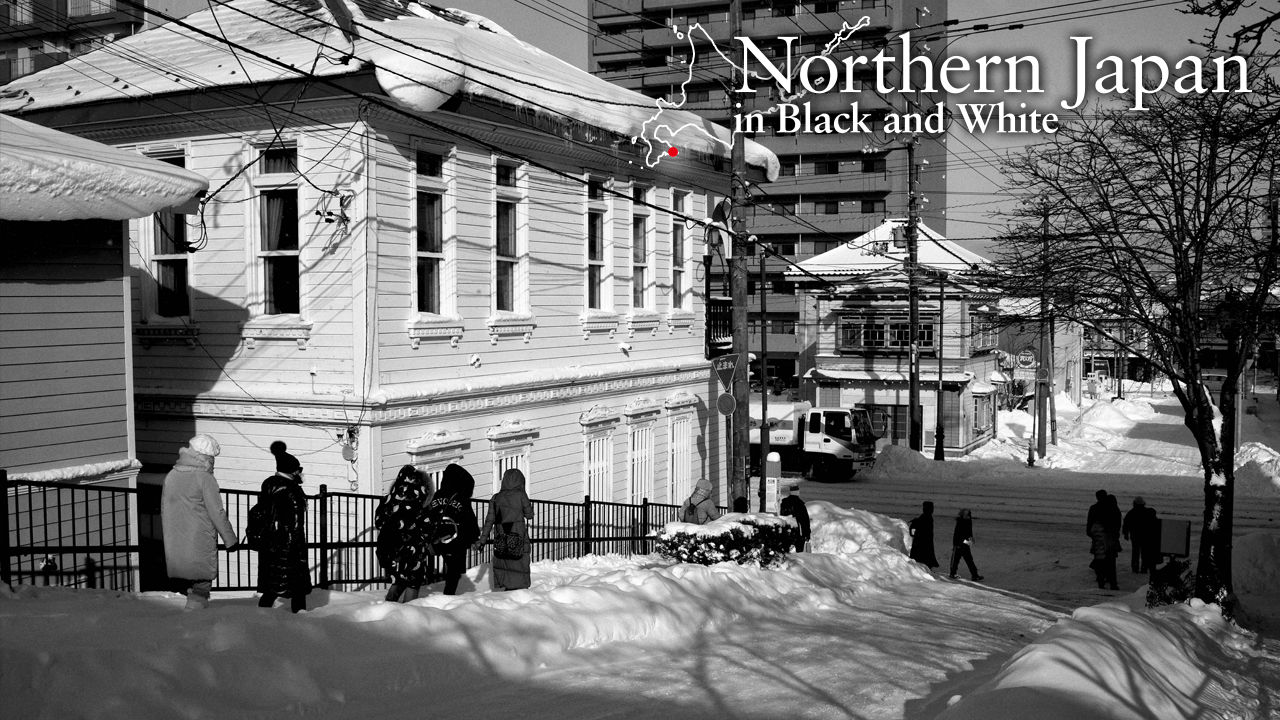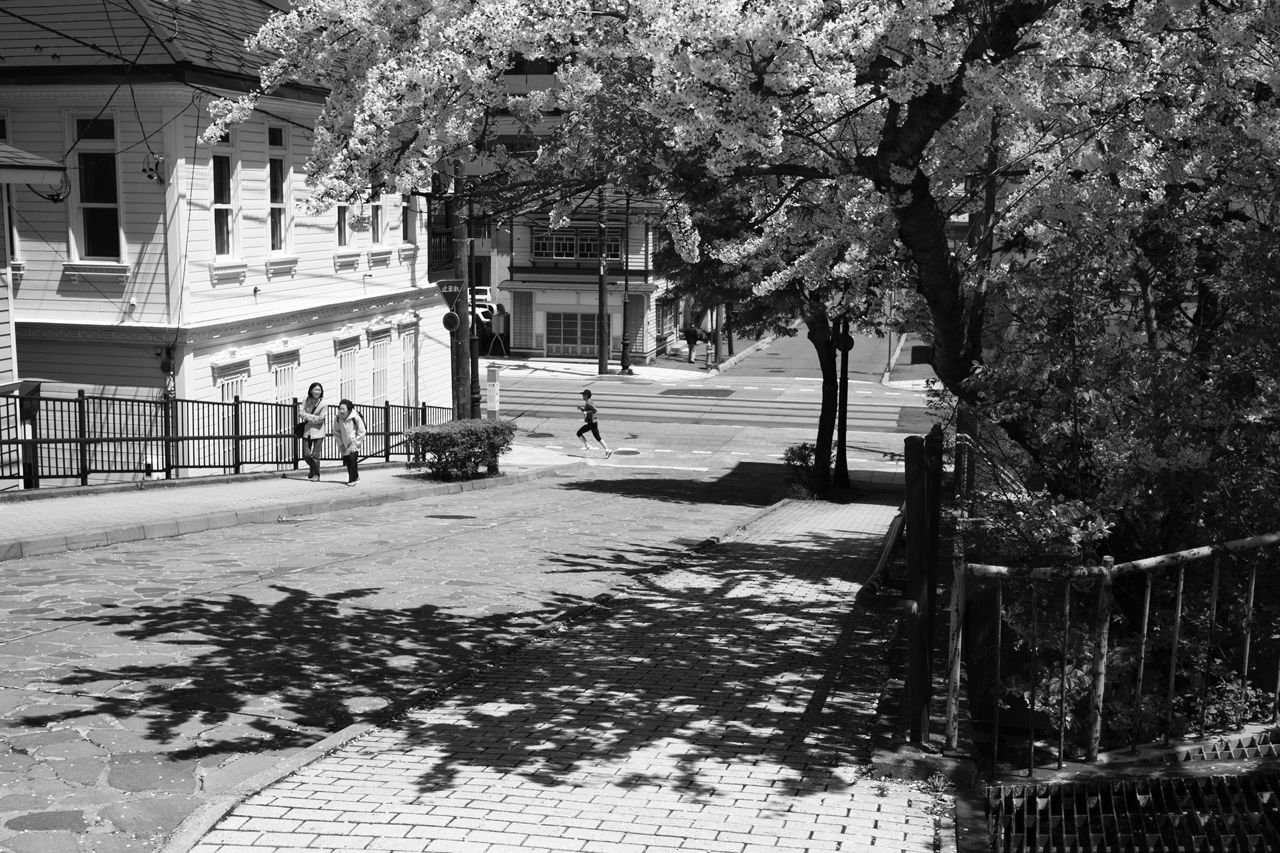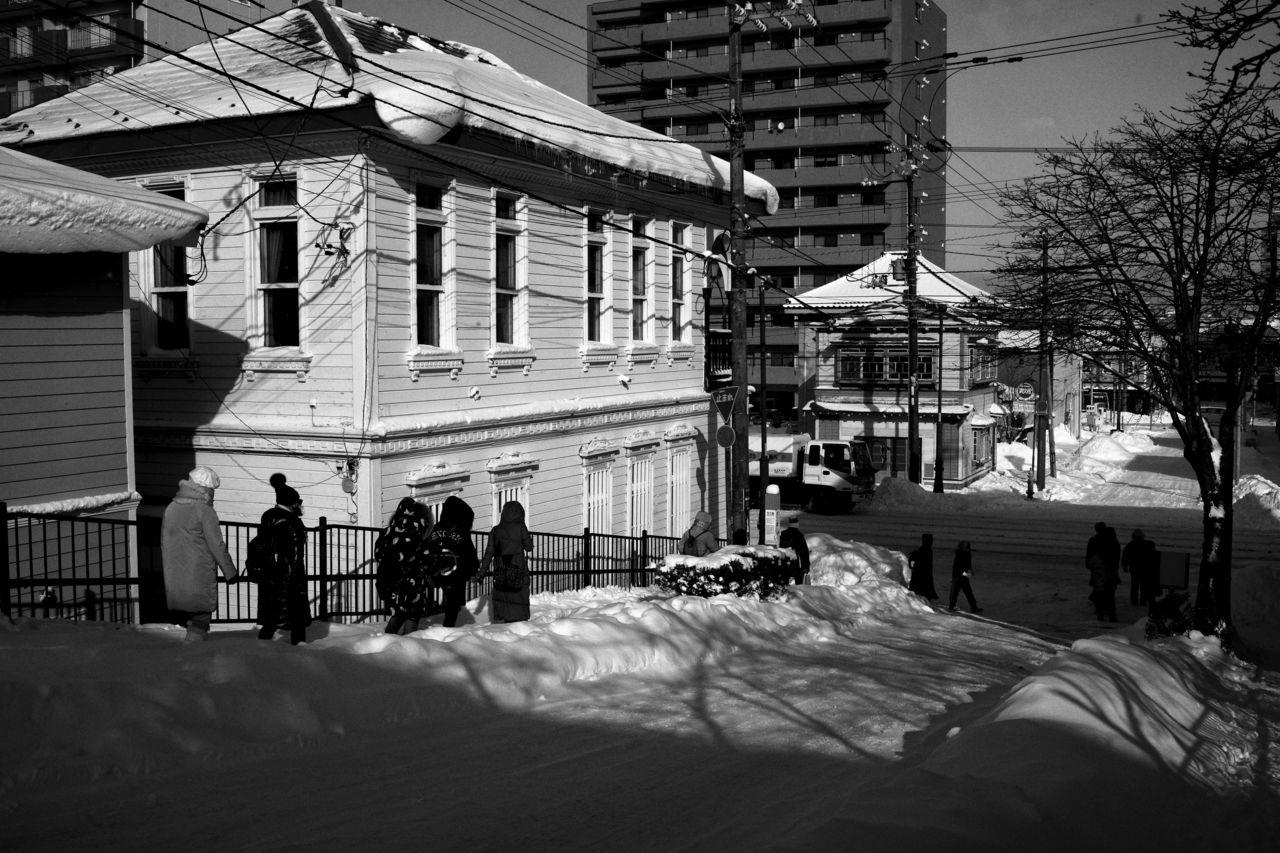
On the Hills of Hakodate
Guideto Japan
- English
- 日本語
- 简体字
- 繁體字
- Français
- Español
- العربية
- Русский
In my student days, on summer holidays I would ride the overnight train from Tokyo’s Ueno Station to Aomori, and then transfer to the ferry service across the Tsugaru Strait to Hokkaidō. The sight of Mount Hakodate looming up ahead always reminded me how far from home I had been. I distinctly recall being moved by the sight of the steep roads that run from the foot of the mountain down to the port.
These broad, straight roads were built as firebreaks after more than one devastating fire demonstrated why this was necessary. Even counting only the largest of them, there are 18 in all: Motoi-zaka, Hachiman-zaka, Nijukken-zaka, Chacha-nobori, Daisan-zaka . . .
The accumulated history and drama of Hakodate since the port first opened still lingers on these slopes. On one occasion, Thomas Blakiston, an English merchant who lived in the area, was taken by surprise at breakfast when a cannonball fired by a navy warship flew in and dragged the cloth off his table.
My personal favorite of the sloping streets is Daisan-zaka. As you descend the flagstones past the Motomachi Catholic Church with its famous bell, buildings combining Japanese and Western architecture begin to come into view here and there. Small wonder that this uniquely Hakodate site was chosen as one of Japan’s 100 most iconic streets. If you’re in need of refreshment, drop into She Told Me, a café on the ground floor of the historic, renovated Daisan-zaka Building’, for a coffee and an atmosphere that makes you feel as if you’re in New York City’s West Village.
One day I hope to travel up and down the slopes of Hakodate, one by one, and grow closer than ever to the landscape of my childhood.
Daisan-zaka
Access: 5 minutes’ walk from Jūjigai on the Hakodate City Tram.
tourism Hokkaidō Hakodate church photography Northern Japan in Black and White

